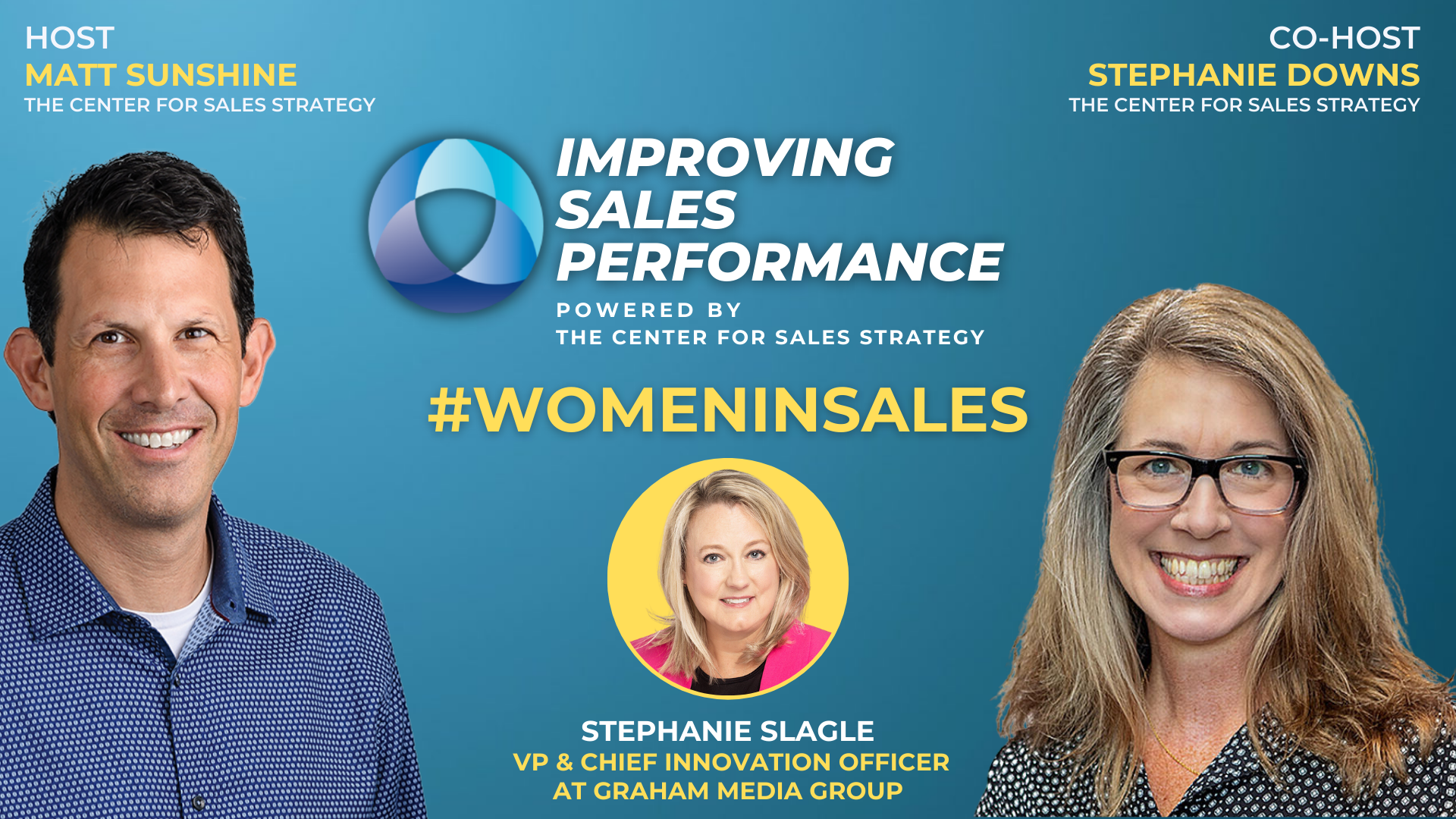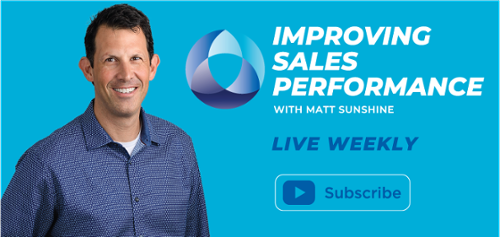
We’re so proud to be celebrating Women in Sales Month once again.
For each week in October, we have an amazing slate of women sales leaders who will be sharing their unique insights. Today, our guest is Stephanie Slagle, Vice President and Chief Innovation Officer at Graham Media Group. Stephanie has so many amazing insights to offer, like:
- Why customer results should always be your North star
- How even the Michael Jordan’s (or Lebron’s) on your team crave coaching
- And, finally, why the mark of a great sales leader lies in the ability to articulate the path forward
Key Performance Indicators (KPIs) for Her Sales Team
Kicking off the conversation, Stephanie Slagle discusses the KPIs her team uses to gauge success.
These include:
- Proposals Pitched: to measure customer interactions
- Multiple Product Campaigns: to assess solution-focused sales
- Key Account Health: for monitoring the well-being of key clients
However, Slagle emphasizes that customer results should always be the North Star for sales teams.
“If I had my perfect state,” Slagle says. “I would love to focus on customer results only.”
“You know, when we're talking about these large brands, like Toyota, we don't know how many cars they sold, if it's attributable to our campaign because that happens many levels above us. But we do know that if they're continuing to advertise with us, then they're having success on that price.
“So, yes, customer results are the most important thing and should be our North Star.”
Sales Managers Need to Make Coaching a Priority
When asked where sales managers should be directing their focus, Slagle makes it clear: Coaching.
“Coaching is the most important thing,” Slagle says. “Because, in our typical sales team, we have two local sales managers that are tasked with working with their teams, which is basically a one manager to five salesperson ratio.
“We want the managers coaching...but they're a single individual, and I need them to multiply what they do across the [five salespeople on their team]. I need the five to constantly be striving to get better.
“So, coaching is the most important thing that they do. It is also the biggest challenge.
“I know this. I was a local sales manager, too. It's the easiest thing to set aside when things are on fire. Because you're like, ‘you know what...they've been doing this a long time, maybe even longer than me. They're fine, they don't need me.’
“But we need to build a culture of all trying to coach better and, in particular, those sales managers who are on the frontline.
“And the ‘Michael Jordans’ of our sales teams, they do want coaching!
“As a newer manager, it was a little bit of a shock to me that they wanted coaching. Because I thought, ‘Well, what can I provide? You've been selling longer than I've been in the business. How could I provide something?’ But I started doing it, and then I realized it’s just like a good coach can watch a basketball player and see what's happening because they're not actually in the field with them.”
Sales Leaders as Pathfinders
Matt asks, “So right now, October 2023, what makes a good or what makes a great sales leader in your opinion?”
“I think the ability to articulate a path forward,” Slagle says. “The ability to show the team, with enthusiasm and positivity, that we're going to go this direction and it's going to be good.
“Because, especially with your newer reps, or even if you've got a new manager, before they get ‘there,’ they have to trust you that ‘there is a there.’
“And so, I think it's the ability to look forward and say, ‘we're going to go in this direction, come on, look, come with me.’
That transcends all of the paperwork and challenges and fires that come up in a day. Those challenges are absolutely real and frustrating and time-consuming, but a good sales leader can stand up and say, ‘We're going to deal with those; we are absolutely going to deal with all those fires, but we’ve got to move in our direction, and we're excited to go in this direction.’
Advice for New Sales Managers
When it comes to new sales managers, Slagle says that she would offer the following advice: “Focus on true customer results. Make that your North Star.
“The conversation changes significantly with a customer when you are actually helping them achieve their goals, as opposed to you when you just have the fantastic package that you'd like to sell them. The conversation is a much more rewarding one for both the account executive and the manager if you can get to that point.
“And so, I would say, help account executives reach that point.
“I would also say my CSS training is showing here but understand that each individual might have a different path to get there. While the metrics and the problem-solving might excite one
person, the human connection might excite the other person. And helping understand and figure out which one of those will work to get to a goal you need, which is truly them caring about their customers' results.
“I truly believe that if you’re hyper-focused on customer results, everything else gets solved. Everything else. All the fires are manageable because you have this thing that is working and is exciting for you.
“Also, with a team of five people, if you're a sales manager in our organization, you have more people to help you solve those fires. If you can coach them up, you multiply yourself, and you have the ability to get even more people on board to help solve those fires.
“You're not standing there all by yourself trying to solve everything.”
Future of Sales Departments – A More Human-Oriented Focus for AE’s
As for where sales departments are headed in the next three to five years, Salgle sees AI tools allowing account executives to have a more human-oriented focus.
“We always hear that AI can take the repeatable tasks that humans do and allow us humans to do the really valuable human tasks. We humans do a lot of repeatable tasks.
“All of us all in the broadcast industry are actively working to automate those repeatable tasks down so that there's less friction on the account executive.
“That's going to allow our account executives to actually be out in the field with more customers, understanding the value of these campaigns, not working on the computer trying to make sure it's running.”




